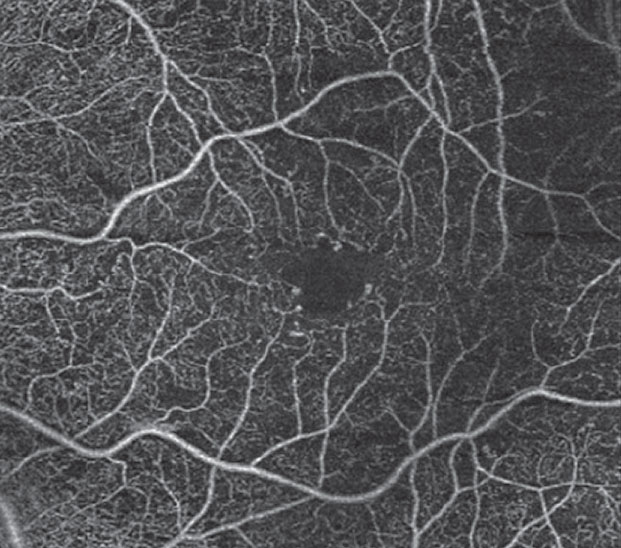 |
Diabetes patients in this study had FAZ enlargement, reduced vascular density in the macular area and significant deviations of FAZ shape parameters compared with healthy controls. Photo: Steven Ferrucci, OD. |
A recent study suggests routine screening of diabetes patients with healthy eyes could help guide monitoring protocols for individuals whose funduscopic exams have not shown any signs of diabetic retinopathy.
This cross-sectional study included 21 diabetic patients without any clinical features of diabetic retinopathy and 21 healthy individuals matched with patients based on their demographic characteristics.
The researchers sought to quantitatively analyze OCT-A images and evaluate the initial changes in macular vascular density and the distortion of the foveal avascular zone (FAZ) before the clinical appearance of diabetic retinopathy. OCT-A was used to assess macular thickness, macular vascular density and morphological FAZ changes.
Data showed no significant difference in age, gender, logMAR visual acuity, spherical equivalent or intraocular pressure among patients and controls. The study authors observed no correlation between age and the FAZ area as well as vascular density.
Compared with healthy controls, the vascular structure of the superficial layer revealed FAZ enlargement, reduced vascular density in the macular area and significant deviations of FAZ shape parameters among diabetic patients.
“The promising view is the potential of these radiomics features for diagnosis of diabetes in a seemingly healthy person without any invasive blood sampling (provided all excluding criteria are rejected) or for the screening and surveillance of DR,” the study authors stated in their paper on the work. “By using these radiomics features, intervals of follow-up of diabetic patients without obvious clinical evidence of diabetic retinopathy may also change if any abnormality is detected in each of the radiomics parameters.”
The researchers noted that the study was not designed to evaluate the effect of age and sex on OCT-A while also acknowledging that the age range in the control and case groups was limited. Therefore, they concluded that a larger sample size with different age groups may be necessary to better assess the impact of these demographic characteristics.
Afarid M, Mohsenipoor N, Parsaei H, et al. Assessment of macular findings by OCT angiography in patients without clinical signs of diabetic retinopathy: radiomics features for early screening of diabetic retinopathy. BMC Ophthalmol. June 27, 2022. [Epub ahead of print]. |

